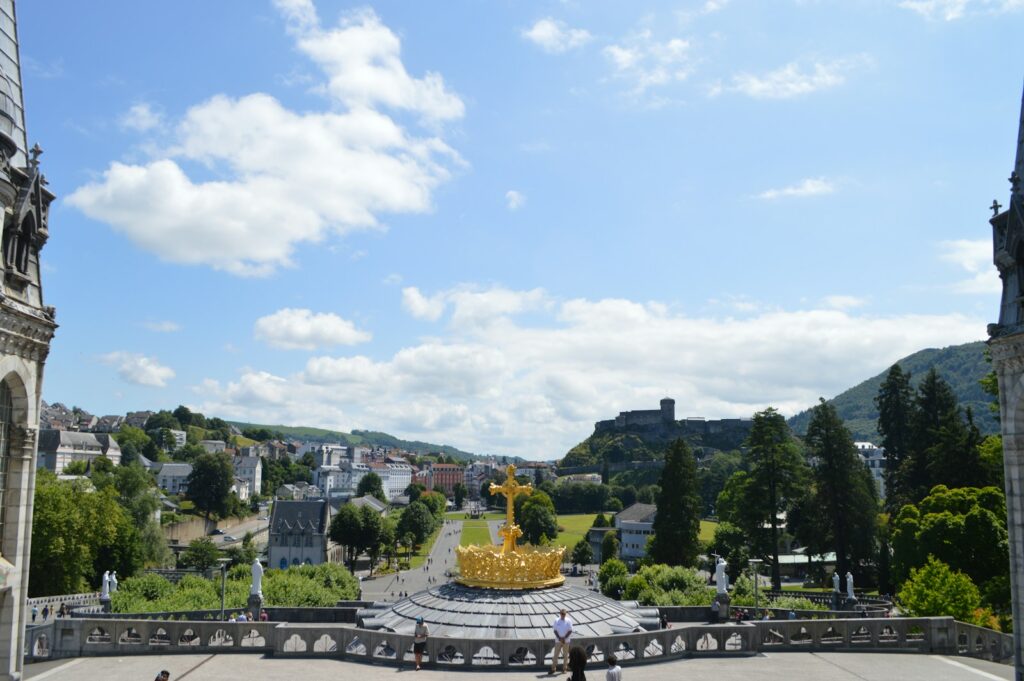Religious and Spiritual Pilgrimages: Embarking on a religious or spiritual pilgrimage is a profound and transformative experience that transcends mere travel; it’s a journey of the soul, a quest for deeper meaning, and a pursuit of divine connection. Whether trekking to ancient temples, holy sites, or sacred shrines, pilgrims embark on a quest for spiritual enlightenment, renewal, and transcendence. In this guide, we’ll explore the significance of religious and spiritual pilgrimages, highlight some of the world’s most revered pilgrimage destinations, and offer insights into the transformative power of sacred travel.
The Significance of Pilgrimage
Pilgrimage holds deep cultural, religious, and spiritual significance across diverse faith traditions, serving as a tangible expression of devotion, faith, and reverence. By undertaking a pilgrimage, believers seek to deepen their spiritual connection, seek forgiveness, receive blessings, or fulfill vows, all while immersing themselves in the sacred history and traditions of their faith.
Top pilgrimage destinations
The Camino de Santiago, Spain

The Camino de Santiago, also known as the Way of St. James, is one of the most famous and revered pilgrimage routes in the world. Stretching across northern Spain, this ancient pilgrimage trail leads to the shrine of the apostle St. James in Santiago de Compostela. Pilgrims from all walks of life and religious backgrounds embark on the Camino, seeking spiritual renewal, personal growth, and a sense of camaraderie with fellow travelers along the way.
Varanasi, India
Varanasi, also known as Kashi or Benares, is one of the oldest and holiest cities in India, revered by Hindus as the City of Light and the spiritual capital of the country. Situated on the banks of the sacred Ganges River, Varanasi is a center of pilgrimage and religious devotion, drawing millions of visitors each year to bathe in the purifying waters, perform rituals, and seek spiritual enlightenment in the presence of ancient temples and ghats.
Mecca, Saudi Arabia
Mecca is the holiest city in Islam, revered by Muslims worldwide as the birthplace of the Prophet Muhammad and the site of the Kaaba, the most sacred shrine in Islam. Each year, millions of Muslims undertake the Hajj pilgrimage to Mecca, fulfilling one of the Five Pillars of Islam and seeking forgiveness, purification, and divine blessing through rituals such as the Tawaf (circumambulation) of the Kaaba and the symbolic stoning of the devil at Mina.

Lourdes, France
Lourdes is a major Catholic pilgrimage site located in the foothills of the Pyrenees mountains in southern France. It is renowned for the Marian apparitions that occurred there in 1858, when the Virgin Mary is said to have appeared to a young girl named Bernadette Soubirous. Today, Lourdes attracts millions of pilgrims each year who come to pray, seek healing, and participate in religious ceremonies at the Grotto of Massabielle and the Sanctuary of Our Lady of Lourdes.
The transformative power of pilgrimage
Pilgrimage is more than just a physical journey; it’s a spiritual odyssey that challenges pilgrims to confront their beliefs, deepen their faith, and cultivate inner transformation. By stepping outside of their comfort zones, pilgrims open themselves to new perspectives, encounters, and insights, allowing them to return home with a renewed sense of purpose, clarity, and spiritual fulfillment.
Self-reflection and introspection
Pilgrimage offers pilgrims an opportunity for self-reflection and introspection as they journey inward to explore their beliefs, values, and personal truths. Through prayer, meditation, and contemplation, pilgrims confront their fears, doubts, and aspirations, gaining clarity and insight into their spiritual path and life’s purpose.
Connection and Community
Pilgrimage fosters a sense of connection and community among pilgrims, transcending cultural, religious, and linguistic boundaries. As pilgrims traverse sacred landscapes and share in rituals and traditions, they forge bonds of solidarity, empathy, and mutual support, enriching their pilgrimage experience and affirming their interconnectedness with fellow travelers on the journey of life.
Renewal and Rejuvenation

Pilgrimage offers pilgrims an opportunity for renewal and rejuvenation as they seek solace, healing, and divine grace in the presence of sacred sites and spiritual practices. Whether seeking forgiveness, healing from illness, or guidance in times of transition, pilgrims return home with a sense of peace, empowerment, and spiritual renewal that sustains them long after their journey has ended.
In Conclusion, Embarking on a religious or spiritual pilgrimage is a sacred journey of the heart, a quest for meaning, and a profound encounter with the divine. Whether walking the Camino de Santiago, bathing in the waters of the Ganges, circling the Kaaba in Mecca, or praying at the Shrine of Lourdes, pilgrims around the world seek to deepen their spiritual connection, find solace in times of need, and experience the transformative power of sacred travel. So, whether you embark on a pilgrimage of a lifetime or journey inward to the sanctuary of your own soul, may your travels be blessed with grace, insight, and divine presence.
FAQs About Religious and Spiritual Pilgrimages
1. Can people of different faiths undertake religious pilgrimages?
Yes, many religious pilgrimage sites welcome visitors of all faiths and backgrounds to participate in rituals, prayers, and ceremonies. While some sites may have specific requirements or restrictions for participation, many embrace diversity and inclusivity, fostering interfaith dialogue and understanding.
2. How can I prepare for a religious or spiritual pilgrimage?
Preparation for a pilgrimage may include physical training, research into the pilgrimage route or destination, gathering essential supplies and documentation, and engaging in spiritual practices such as prayer, meditation, or reflection to prepare your heart and mind for the journey ahead.
3. Are there any health or safety considerations for pilgrims?
Pilgrims should be mindful of their physical health and well-being, particularly when undertaking long journeys or participating in strenuous activities. It’s important to stay hydrated, get adequate rest, and listen to your body’s needs while on pilgrimage. Additionally, pilgrims should be aware of any potential safety hazards or travel advisories at their destination and take appropriate precautions to ensure their safety and security.
4. How can I make the most of my pilgrimage experience?
Approach your pilgrimage with an open heart, a spirit of humility, and a willingness to embrace the unknown. Be present in the moment, engage with the local community, and participate wholeheartedly in rituals and traditions. Allow yourself to be guided by intuition, serendipity, and divine grace, and trust that your pilgrimage experience will unfold exactly as it is meant to.
5. What can I expect to gain from undertaking a pilgrimage?
The benefits of pilgrimage are as varied and individual as the pilgrims themselves, but common outcomes include spiritual growth, personal insight, emotional healing, and a deeper connection to the divine. Pilgrimage offers an opportunity for self-discovery, transformation, and renewal, leaving pilgrims with lasting memories, lessons, and blessings to carry forward on their journey through life.


